
Turbocharged, rear-wheel drive, and often seen sliding sideways through corners, the S14 Nissan 200SX with its turbocharged 2.0-liter SR20DET engine pumping out 200 hp was a robust competitor to the dominant German cars of the same era.
In stock form, it’s capable of finishing the 0-60 mph sprint in around seven seconds and has a perfectly balanced chassis. It’s also super easy to modify, and these qualities have kept it near the top of the sports coupe food chain. It’s obvious why it’s one of the darlings of the drifting community.

In 2021, Ruben became the proud owner of a 1998 Nissan 200SX S14A. He’s always had an interest in Japanese cars, and armed with a bit of inspiration from The Fast and the Furious and YouTube, he’s now created a monster.
The first thing Ruben did when he got the car was to hire Tommy Torsteinsbrend and Steffen Høgli to tear down and rebuild the original SR20DET engine.
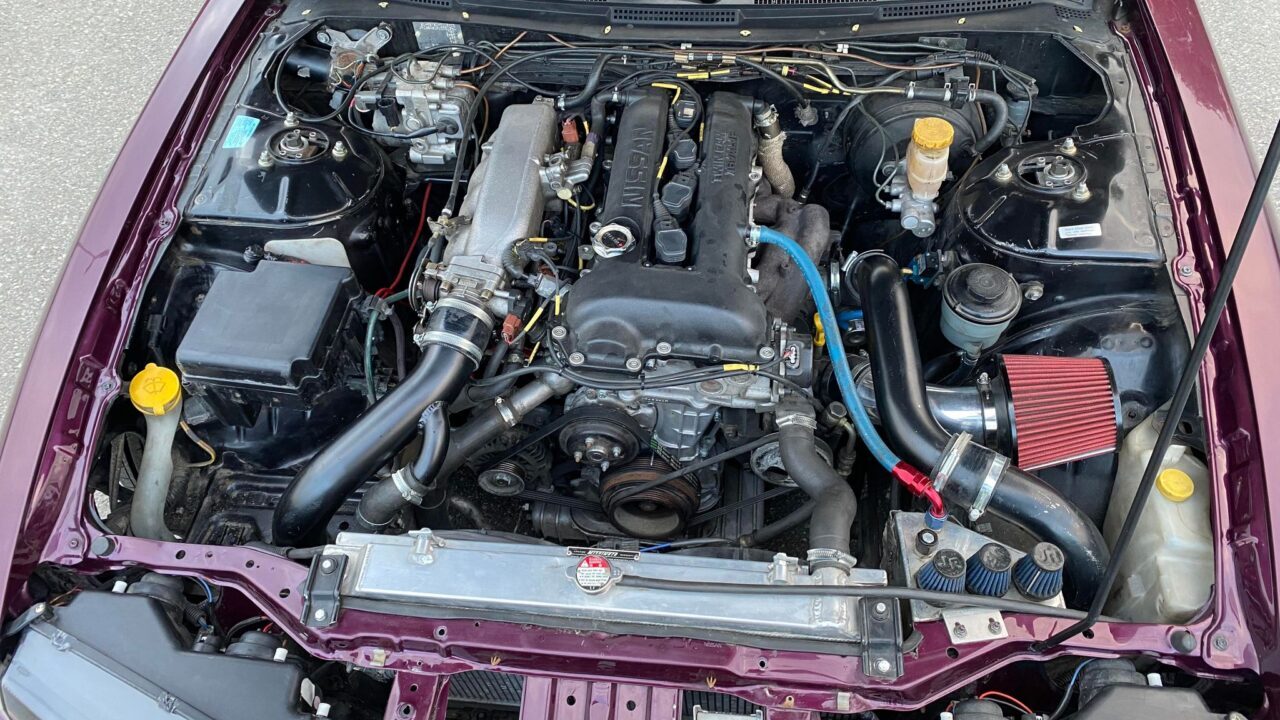
Although the process faced delays due to long delivery times for certain parts (they clearly weren’t overnight parts from Japan), Ruben’s patience paid off when the car gained a whole new personality with the newly built engine.
The list of parts reveals a thorough approach to performance. Here, we find Eagle rods with ARP bolts, CP 86.5mm pistons, and a Tomei steel head gasket.
The block has been bored/honed from 86mm to 86.5mm, the head has been completely overhauled with new valve guides, lapped valves, and new oil lines over the cams.
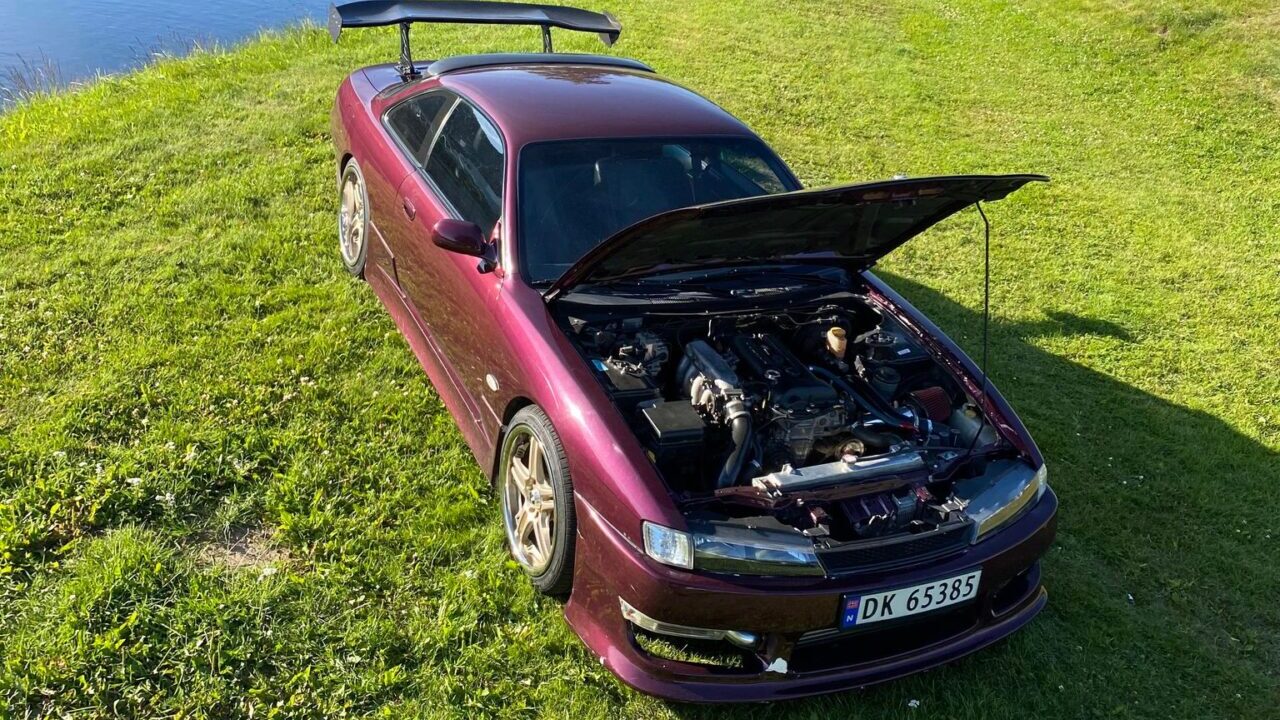
A Precision 5858 turbo forces more air into the engine, and a set of Nismo 555 injectors handle the fuel supply. A MaxxECU Street ECU with a new wiring harness from Igelsrud Performance ensures all this works as it should. This is connected to a tablet that functions as a digital dashboard.
The engine also has Audi R8 coils, an ARC Big Wing sump, 3” exhaust from the turbo, a larger intercooler, and an aluminum radiator with dual 12” fans.
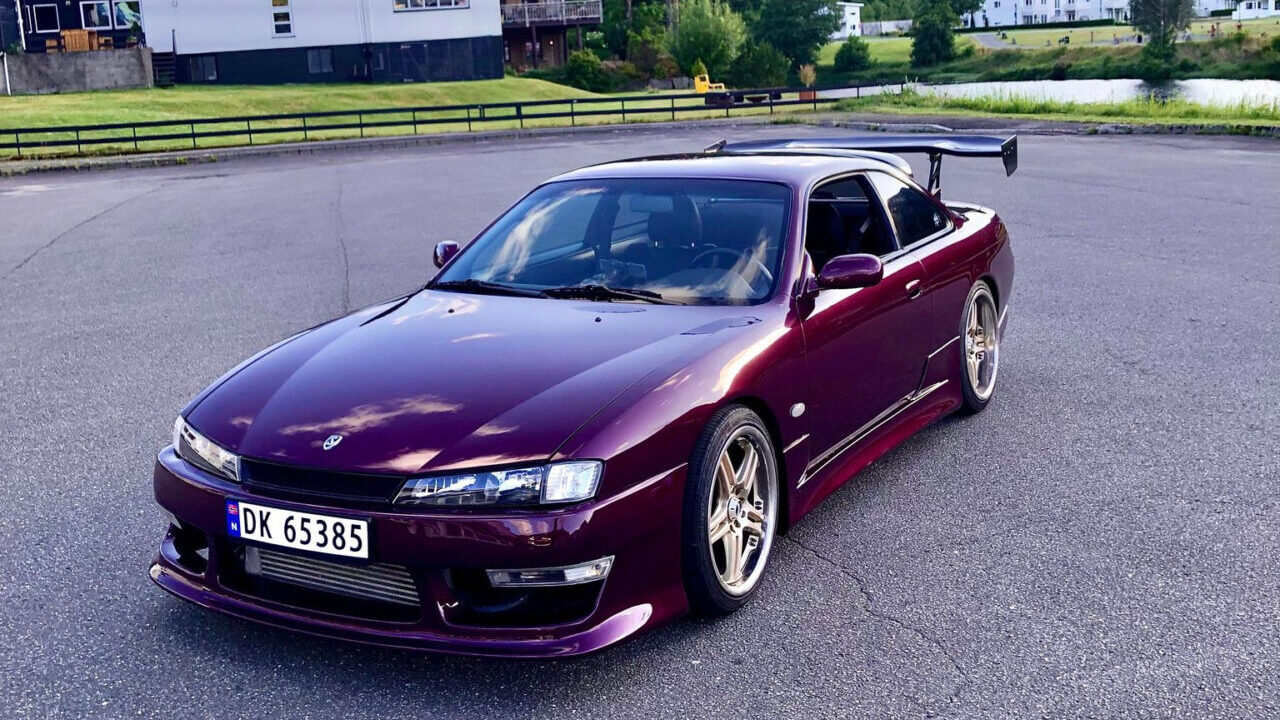
Various wear and tear parts were, of course, replaced while the engine was out, so here we have a new timing chain, new chain guides, and oil- and water pumps. A new OEM gasket set has also been installed, except for the head gasket, which is by Tomei.
These modifications result in 330 wild horses at the rear wheels and 295 lb-ft of torque at 1.1 bar boost pressure. It goes without saying that the stock clutch wouldn’t have lived a long life dealing with this power, so it was replaced in favor of an Extreme 6 Puck clutch.

Although it’s always fun to have plenty of power available, Ruben has resisted pushing the envelope too far. Ultimately, drivability and reliability were the top priorities.
Ruben says he didn’t really have any specific inspiration for the 200SX’s styling, but he envisioned a car with a raw look that still maintains a fine balance with the original appearance.
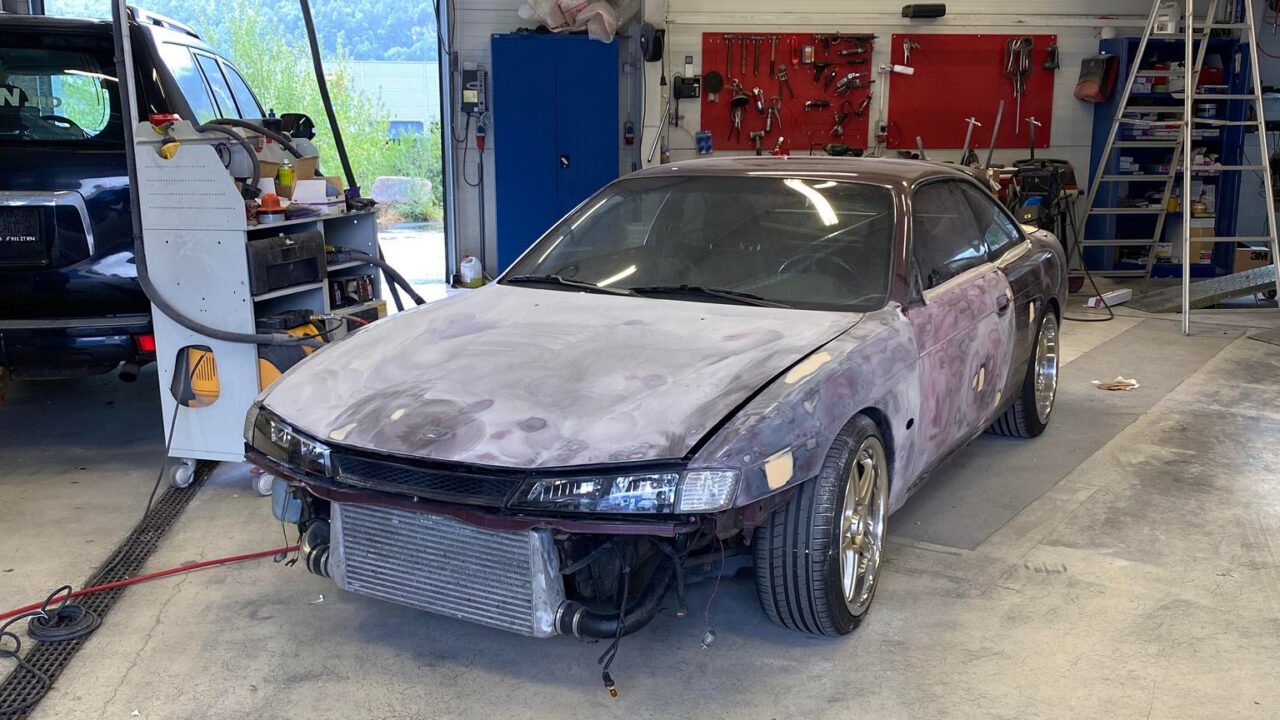
Since the car was so pristine and rust-free, he didn’t want to cut into it to install wide-body kits, so it’s far from as eye-catching as some other Nissan 200SX builds we’ve featured.
But even though it doesn’t have an overly modified appearance, that doesn’t mean the exterior hasn’t received a proper overhaul.

A body kit was already installed when he bought the car, so Ruben isn’t sure who the manufacturer is. The front bumper and side skirts had taken a beating, so he fixed them up and kept them on the car rather than buying new ones.
The rear bumper has been fitted with a stylish Z Edition rear skirt, and on the trunk lid, there’s now an Origin Labo carbon fiber GT wing, and a small roof spoiler made of the same material is also installed.
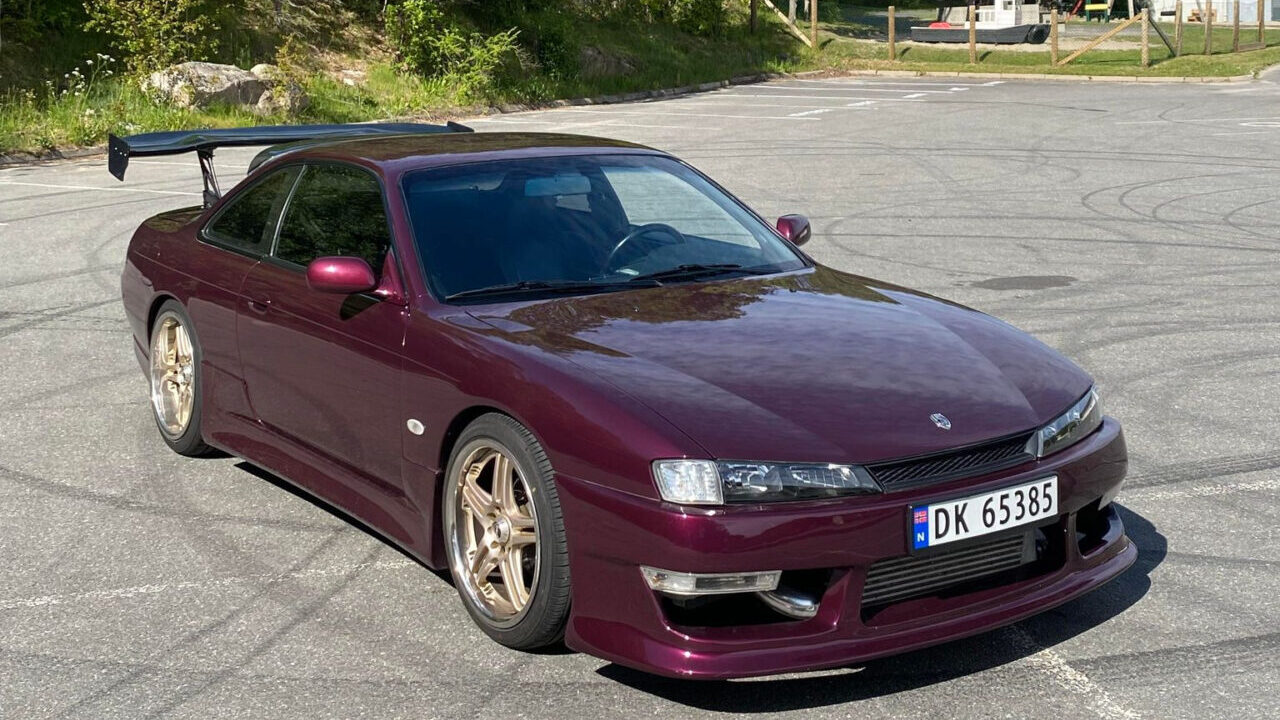
With all the styling in place, the car needed a few coats of paint, and Ruben did the job himself, with good help from his father. The choice fell on the original color the car came with, LS1 Deep Fuschia Purple — only 297 cars in Europe were delivered with this color, and worldwide, only 947 had this paint option.
The color is very special and changes depending on the lighting conditions. It’s no wonder why it’s one of Ruben’s favorite aspects of the car, along with the driving experience.

The driving characteristics have also been significantly improved compared to the standard S14, thanks to a set of Tein Superdrift Coilovers and Whiteline stabilizer bars front and rear.
Naturally, a car like this needs wider wheels and tires than it came with from the factory, so Ruben invested in a set of Ultralite GT2 wheels, 18×8.5 in the front and 18×9.5 in the rear. Between the spokes, you can see that the original brakes are still in place, but now with EBC Yellowstuff brake pads.

Inside the cockpit, he has retained the original black leather, giving it a classic and timeless feel. While the main focus on the exterior has been on performance and aesthetics, driver comfort remains a priority inside. That said, Ruben has some plans for the interior in due time.
Building a car of this caliber requires expertise, and Ruben would like to express gratitude to Tommy Torsteinsbrend and Steffen Høgli for their invaluable contributions to the engine build. Other aspects, including the bodywork, paint, and minor adjustments, were a joint project between Ruben and his father.
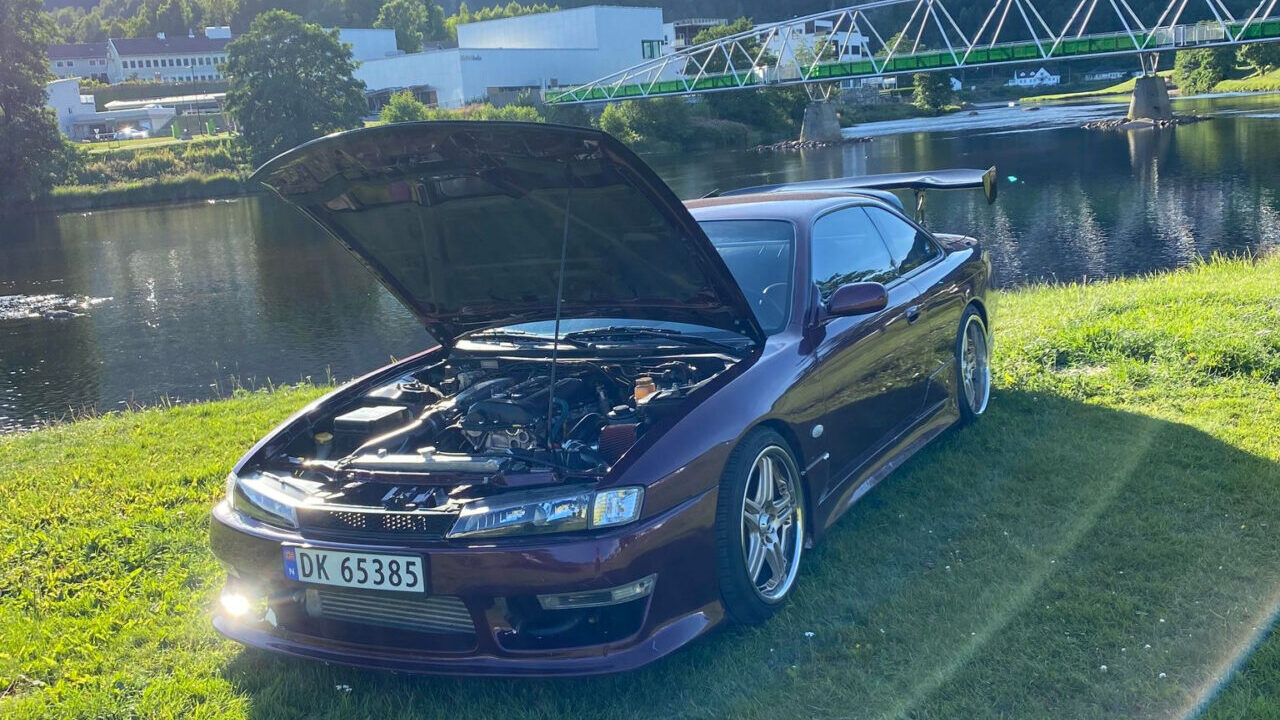
There are plans of getting new wheels and some interior upgrades on the horizon, but for now, he wants to enjoy every moment behind the wheel of the Japanese sports coupe.
If you want to follow Ruben’s 200SX journey further, you can do so on Instagram and TikTok.




